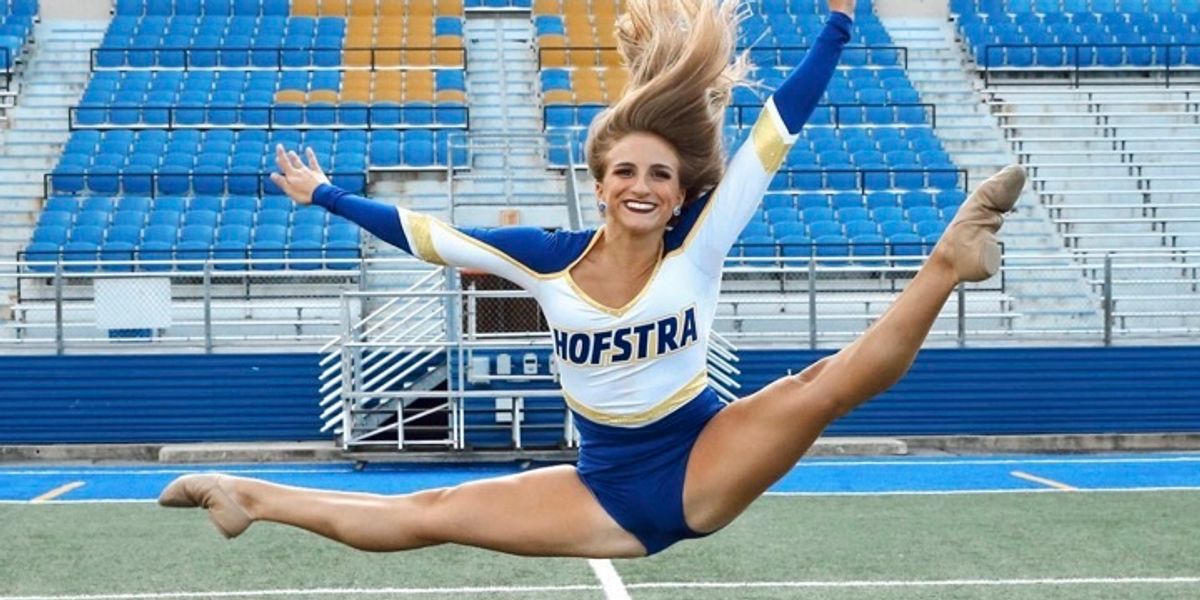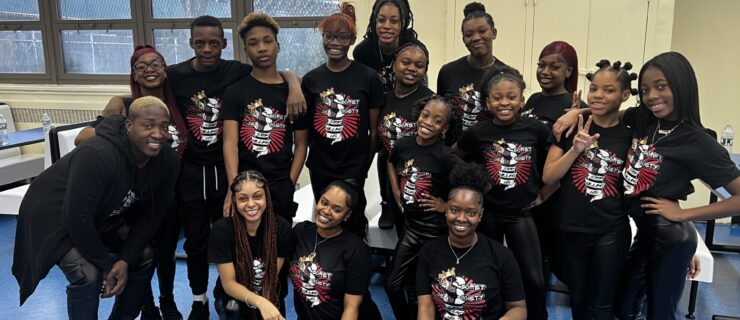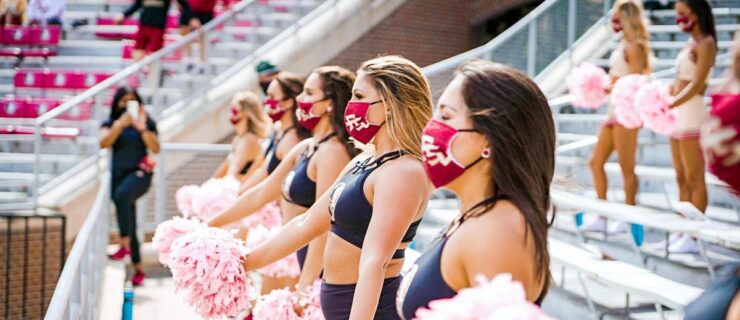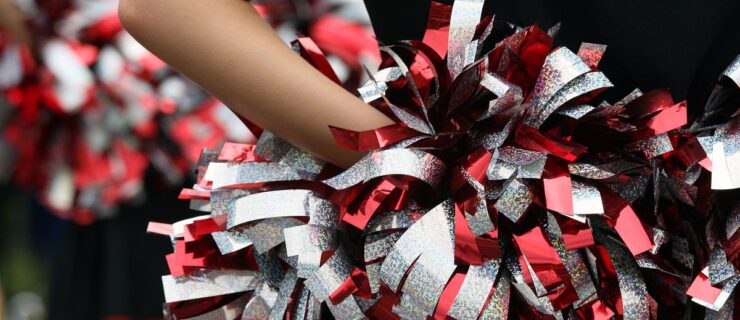The Tricks Studio Dancers Need to Learn Before Joining a College Dance Team
Studio dancers hoping to join a college dance team have a lot to prepare for: The skills required include advanced acrobatics and technical feats. If you’re looking to earn a spot on the roster of your dream team, you’ll definitely want to get a head start on tackling these difficult moves.
“Each year, the Universal Dance Association (UDA) adds more and more skills to their ‘allowed’ list, making the demand larger for dancers. We look for dancers who have solid acro backgrounds or are willing to work and get these skills through training,” says Kelly Olsen-Leon, coach of the Hofstra University dance team.
Top Dance Team Tricks Checklist
-
Handspring: From a standing position, flip onto your hands, propel your body up, and land back on your feet -
Kip-up:
Start from the ground, roll onto your back, then spring up to your feet -
Headspring:
Similar to a handspring, but lands on the head as well as the hands -
Rubberband
:
Do half a back handspring, then pop back up to standing -
Aerial:
A cartwheel with no hands -
Headstand (stall):
Standing on your head, raise your legs into the air -
Double turning disc:
Chaîné into a turning jump with legs in open second -
Back walkover:
Start from a standing position, go into a back bridge, and return to a standing position -
Leg-hold turn:
Turning while holding your leg up with your hands - Turn combos with changing spots
- Double and triple toe touches
Every college dance team will have a different skill-set requirement, so it’s essential to research what advanced skills each team requires.
The Do’s and Don’ts of Getting Dance Team-Ready
Do: Look into the required skills of the teams you are interested in and how each team executes them,
as no two teams are the same. Melissa McGhee, coach of the Ohio State University Dance Team, advises dance team hopefuls to research how their dream teams approach tricky elements in a routine. “You should understand how every team prepares, completes, and finishes each skill,” she says.
Don’t: Rely on instructional videos only. Olsen-Leon cautions dancers not to just try to watch tricks from a video, as it’s difficult to ensure your technique and placement is exact. “It’s best to work with a trainer on progressions towards getting the skills correctly,” she says.
Do: Focus on fundamentals first. “One mistake we frequently see is dancers attempting to jump right into the more advanced skills,” McGhee says. “This, unfortunately, leads to improper execution due to a lack of focus on the basics.”

Hofstra University Dance Team member Lili Nash demonstrating an aerial (William Trinity, courtesy Hofstra University)
Do: Work on progressions. Many skills have steps along the way to executing the skill full-out. With aerials, for example, Olsen-Leon recommends dancers start on mats with whip cartwheels. Next, start switching back and forth with “hot hands” (pick them up really fast at the end of your cartwheel) and dive cartwheels (waiting until the last second of your cartwheel to put your hands down). While working in this way, don’t skip to the next step until you are sure you can successfully execute the prior step in the progression.
Don’t: Be afraid to try.
Making at least a (safe) attempt at a trick will show college coaches your potential and willingness to learn. Jodi Maxfield, head coach of the Brigham Young University Cougarettes, says, “At tryouts, we require right and left aerials, kip-ups and headsprings. Once dancers have made the team, however, we may require them to learn more advanced skills, like rubberbands.”
Do: Work on conditioning. Executing the skill is the ultimate goal, but conditioning is essential to help you get there. Most college dance team members are required to spend time conditioning to build the strength and stamina needed to execute tricks and skills correctly. Get a head start by adding high-intensity interval training (HIIT) and strength training to your regimen.
Don’t: Put off learning or improving required skills. “The earlier you start the better,” Olsen-Leon points out.
Do: Seek outside help. Attend team clinics, or find open gyms or acro classes in your area. Ask for privates with older dancers, who may already be on a college team and can help you learn certain tricks. Finally, UDA has a College Dance Team Combine program for sophomore through senior high school dancers to help prepare them for college dance team tryouts.




